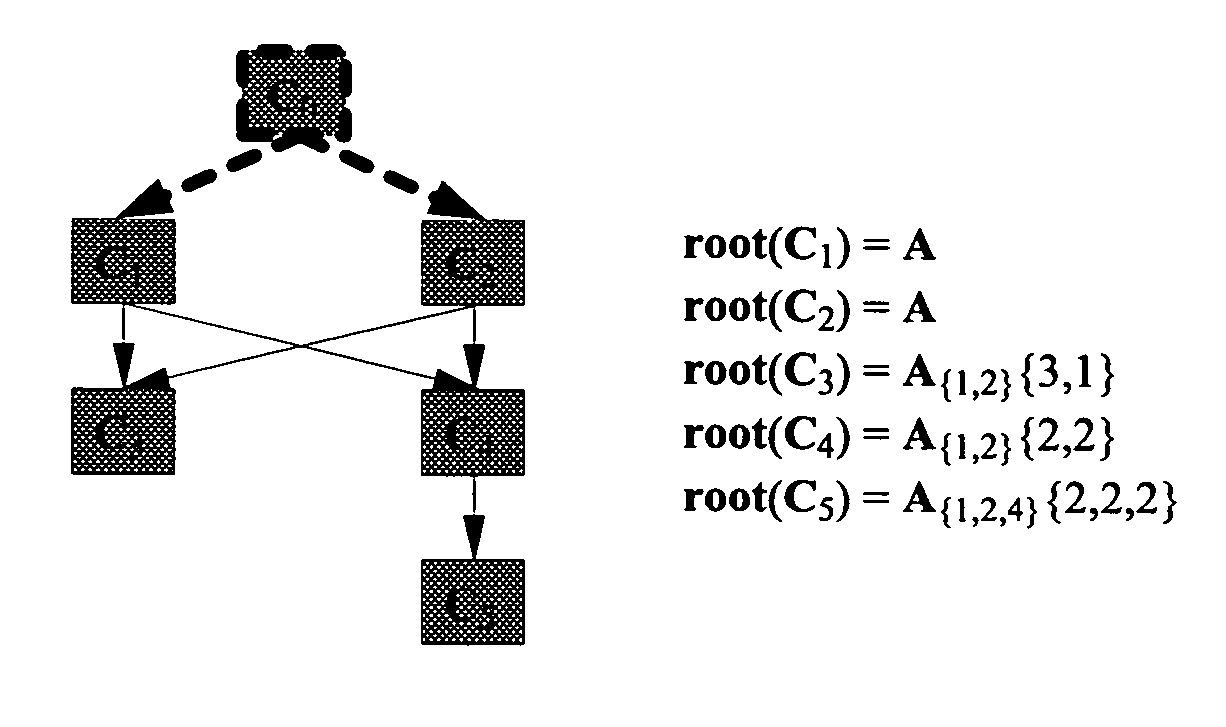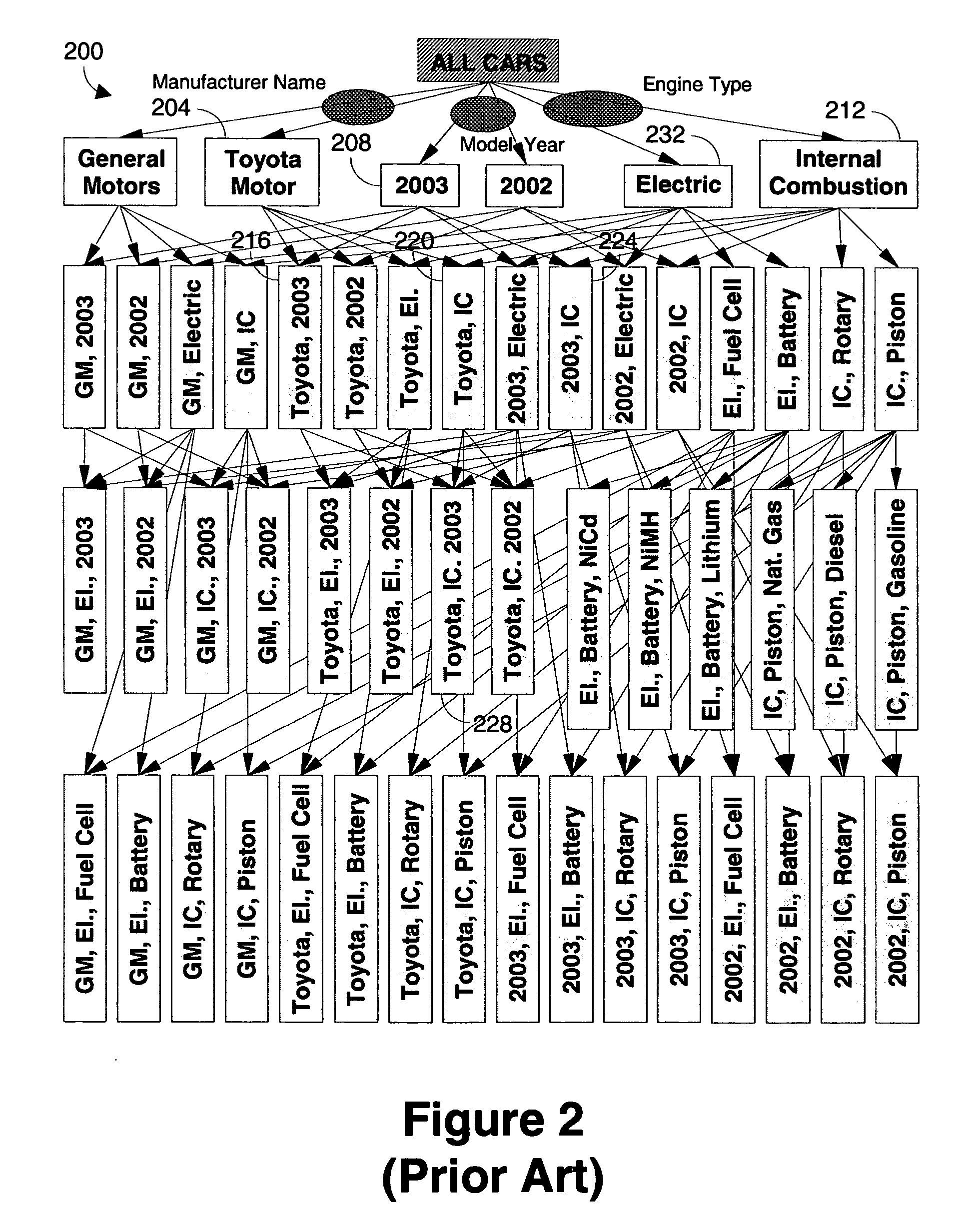Method of building persistent polyhierarchical classifications based on polyhierarchies of classification criteria
a classification criteria and polyhierarchical technology, applied in the field of construction and/or description of polyhierarchical classifications, can solve the problems of not less dramatic increase in data storage requirements, inability to effectively solve the problem of descriptions in terms of conventional dags, and dramatic increase in the complexity of polyhierarchy
- Summary
- Abstract
- Description
- Claims
- Application Information
AI Technical Summary
Benefits of technology
Problems solved by technology
Method used
Image
Examples
Embodiment Construction
Illustrative embodiments of the invention are shown in FIGS. 5-22. In the interest of clarity, not all features of an actual implementation are described in this specification. It will of course be appreciated that in the development of any such actual embodiment, numerous implementation-specific decisions must be made to achieve the developers' specific goals, such as compliance with system-related and business-related constraints, which will vary from one implementation to another. Moreover, it will be appreciated that such a development effort might be complex and time-consuming, but would nevertheless be a routine undertaking for those of ordinary skill in the art having the benefit of this disclosure. To simplify the following discussion of the present invention, headers, such as “Illustrative Embodiments of a Classification by a System of Criteria”, “Illustrative Embodiments of Polyhierarchies of Criteria”, etc., have been introduced at certain points for the convenience of t...
PUM
 Login to View More
Login to View More Abstract
Description
Claims
Application Information
 Login to View More
Login to View More - R&D
- Intellectual Property
- Life Sciences
- Materials
- Tech Scout
- Unparalleled Data Quality
- Higher Quality Content
- 60% Fewer Hallucinations
Browse by: Latest US Patents, China's latest patents, Technical Efficacy Thesaurus, Application Domain, Technology Topic, Popular Technical Reports.
© 2025 PatSnap. All rights reserved.Legal|Privacy policy|Modern Slavery Act Transparency Statement|Sitemap|About US| Contact US: help@patsnap.com



